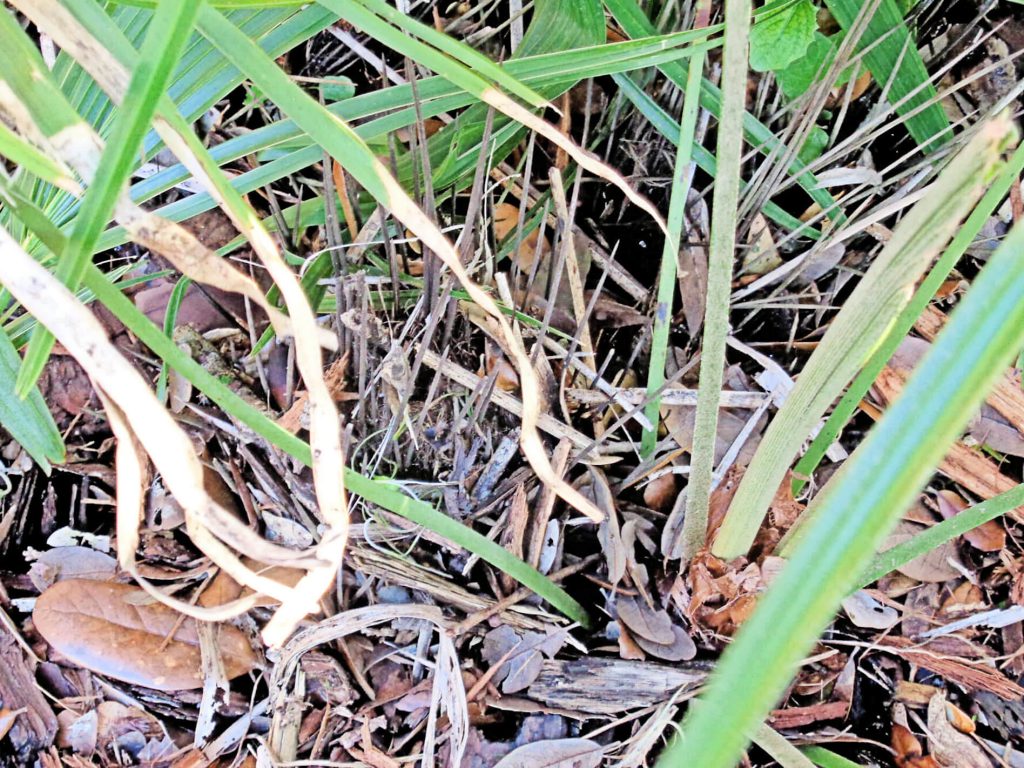By Ralph E. Mitchell

There are many palms that grace our landscapes, and nothing is more appreciated than a cold-hardy type for those random cold winters that tests the mettle of some species. One attractive type is the needle palm. A short clumping palm, the needle palm is native and ranges from Georgia south to just north of us in the wild. They are cultivated throughout Florida on into Hardiness Zone 10, and are known for their beautiful palmate fronds, and unique needle-like spines.
The slow-growing needle palm forms a tightly packed clump of stems. This palm never really develops a trunk per se, but more of a crown instead. As it grows, the clump becomes wider and will reach six to eight-feet tall. Best suited to a full sun/part shade area, needle palms are perfect as an understory planting.
Keep in mind that this native palm is endangered in the wild and protected, so only purchase cultivated specimens. Needle palms can on occasion be found at garden centers, but regional native nurseries are probably your best source. While seeds can take up to a year to germinate, mature plants with suckers can be carefully divided in order to obtain rooted side-shoots which will transplant quite nicely. Moderately drought tolerant once established, this palm can even take some flooding on occasion, but is not salt-tolerant.
Be careful where you plant your needle palms as their up to ten-inch long spines are not appreciated by people passing by. In fact, the needles can become a nuisance, so plan before you plant. As the needle palm matures, it may either develop somewhat upright growth, or hug the ground as it spreads out and reaches for the light. Because of its relatively slow growth, the needle palm can also make a handsome container plant on a patio or deck.
The needle palm was selected by the Florida Nurserymen & Growers Association as one of its 2004 Plants of the Year, and it is a Florida-Friendly Landscaping™ approved plant – two great seals of approval! This is a palm you may want to check out – needles and all! For more information on all types of palms suitable for growing in our area, or to ask a question, please visit https://www.facebook.com/CharlotteMGLifeline/. Ralph E. Mitchell is the Director/Horticulture Agent for the UF/IFAS Charlotte County Extension Service. He can be reached at 941-764-4344 or ralph.mitchell@charlottecountyfl.gov.
Resources:
UF/IFAS Gardening Solutions – Needle Palm. (2021) The University of Florida Extension Service, IFAS.
Warner, K. (2017) Fact sheet: Needle Palm. The University of Florida Extension Service, IFAS – Nassau County.
Florida Plant Atlas -Institute for Systematic Botany, University of South Florida, Tampa. Rhapidophyllum hystrix. http://florida.plantatlas.usf.edu/Plant.aspx?id=688&display=photos.
Rhapidophyllum hystrix (2021) Florida Native Plant Society. https://www.fnps.org/plant/rhapidophyllum-hystrix .
The Florida-Friendly Landscaping™ Guide to Plant Selection & Landscape Design (2010) The University of Florida Extension Services, IFAS.
Reynolds, C. (2004) These plants are budding stars. https://www.heraldtribune.com/article/LK/20040417/News/605211575/SH.
 0
0
